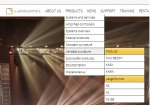Re: Infocomm???
You should package it up as a club killer, as a direct competitor to all those speaker on stick on sub systems out there.
Tall, Skinny, increased sight lines, better coverage, better impulse response, one stereo crossover, next to no DSP, 2 stereo amps. What's not to like?
Hum - I've been thinking of replacing my Acoustats and my room is the right size to make this work. Interesting.
That would be a great sounding setup-deep, full, smooth etc.
It would also make a great sounding home setup. Something you can't say for "professional" type products.
You should package it up as a club killer, as a direct competitor to all those speaker on stick on sub systems out there.
Tall, Skinny, increased sight lines, better coverage, better impulse response, one stereo crossover, next to no DSP, 2 stereo amps. What's not to like?
Hum - I've been thinking of replacing my Acoustats and my room is the right size to make this work. Interesting.

